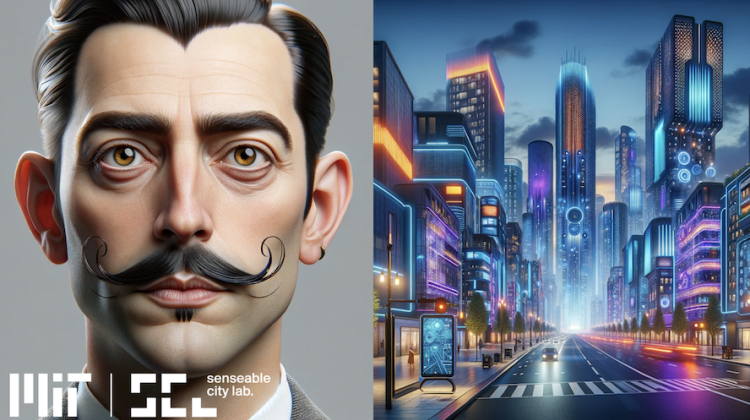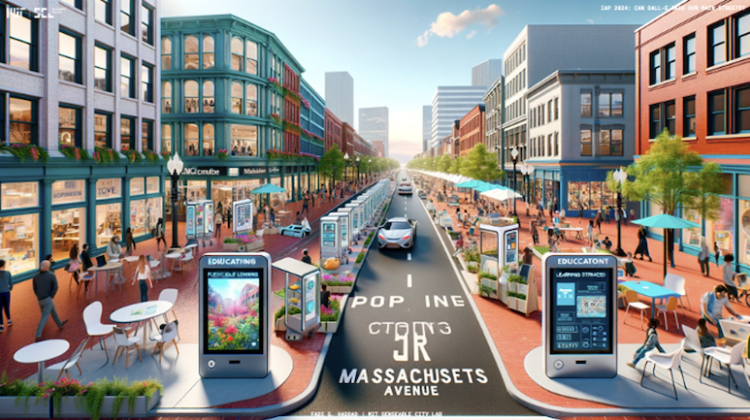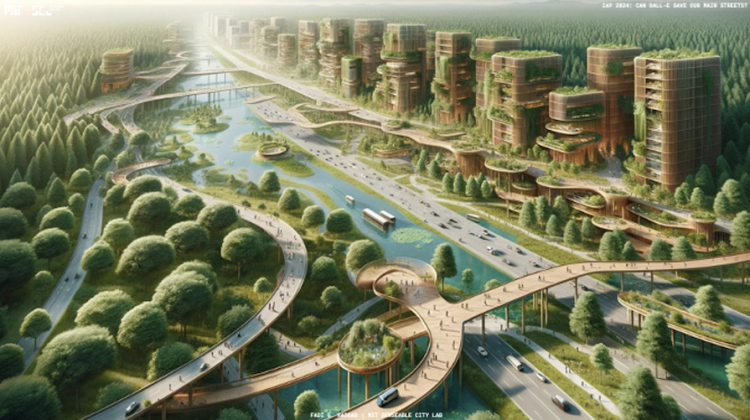Harnessing Generative AI to Explore the Future of Main Streets

Search “main street” on Google, and you will stumble upon a plethora of organizations and government programs dedicated to “defending,” “reclaiming,” “reimagining,” and “breathing new life” into the spatial and economic ideals of the traditional main street. Historically, North American cities blended residential and commercial activities, with retail stores nestled within walking distance of homes, fostering vibrant streets and friendly neighborly interactions that facilitate social connections to create a sense of community and place. Over time, main streets’ decline has been associated with nearly as many factors as the organizations and initiatives dedicated to saving them--from the shift to suburban shopping malls and big box stores to the most recent rise of e-commerce that began after the Great Recession and only accelerated after COVID.
More and more consumers opt for simplicity and convenience, ordering almost everything online with a simple tap on their smartphones, meaning there is less need for the shopping physical space – what some urban planners have termed as a paradigm shift to “non-place urbanism,” which adds to the challenges of "saving" main streets. If technology is a major contributor to the decline of main street and this loss of “place,” could technology also be the remedy in revitalizing these quintessential urban spaces at the heart of our towns and cities?
Over the January 2024 independent activities period (IAP), a three-part workshop series explored to what extent chatGPT’s DALL-E 3.0, released by OpenAI in October 2023, might have real-world applications for city design challenges like main streets. “These workshops originated from a strong desire to give back to DUSP by sharing my main street research but also sparking conversations for innovative solutions on this issue that has puzzled policymakers both in Canada and the US,” says Fadi Haddad, a visiting scholar who designed and led the IAP workshops. “After testing out DALL-E’s new features and being impressed with its capabilities, my faculty sponsor Fabio Duarte and I agreed to morph the course into how planners and communities can harness visual generative AI in city design.” DALL-E’s generative model is built upon ChatGPT’s system trained on tens of millions of images and their descriptions
During the envisioning exercise, participants had mixed success. For example, some participants were able to create a vision of an accessible 2054 Massachusetts Avenue (Mass Ave) main street which recognizes and adapts to changing human needs. The generated DALL-E images showed how a Mass Ave with integrated digital displays and AR/VR stations to foster continuous and inclusive community learning.
- Image

“We almost can’t get a full Main Street without cars [...] and so if AI can't do it, we have to think about the biases in our society, who are the people that make the AI? And what biases do they have? And what biases may that reproduce?” Commented a participant during the workshop.
- Image

“I think this workshop highlighted the potential of generative AI as a communication tool---allowing people to visualize and communicate their ideal main streets. In this way, as a powerful and accessible communication tool, generative AI does make planning and visioning future cities more accessible to a wider range of the population,” commented another participant working on an environmental-centric main street.
Fadi Haddad’s Senseable City Lab research investigates how big data can shed new light on the dynamics and resilience of main streets in Canada and the United States. His research activities are supported by Fulbright Canada and his employer Canada Economic Development for Quebec Regions, the Government of Canada regional development agency for Quebec.
“It is exciting to be a part of the MIT community which is at the cutting edge of advancing knowledge in the yet unexplored field of visual generative AI and city design,” reflected Haddad. “We started these workshops with the prompt, ‘Can DALL-E save our Main Streets.’ Perhaps the question we should be asking is not if it ‘can’ save main streets but ‘how’ can we use it as an empowering tool for good to generate the cities of tomorrow we all aspire to live in.”


